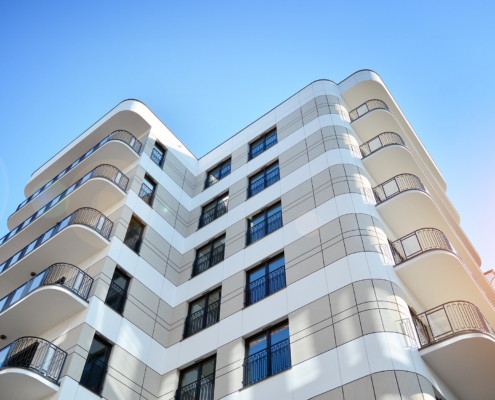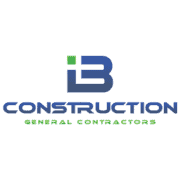 https://aeretusa.com/wp-content/uploads/2024/10/Image-of-new-design-modern-bedroom-interior-decoration-at-hotel.jpg
1250
2000
Abstrakt Marketing
/wp-content/uploads/2023/12/NEW-Aeret-Restoration-logo-AI-12.23-1-1030x210.png
Abstrakt Marketing2024-10-24 08:46:212024-10-30 08:17:32Commercial Water Damage Causes in Hospitality Settings (And How To Prevent Them)
https://aeretusa.com/wp-content/uploads/2024/10/Image-of-new-design-modern-bedroom-interior-decoration-at-hotel.jpg
1250
2000
Abstrakt Marketing
/wp-content/uploads/2023/12/NEW-Aeret-Restoration-logo-AI-12.23-1-1030x210.png
Abstrakt Marketing2024-10-24 08:46:212024-10-30 08:17:32Commercial Water Damage Causes in Hospitality Settings (And How To Prevent Them)How to Prevent Mold After Water Damage
Discover how fast mold can begin to invade your home after water damage and what you can do to prevent it from taking hold. With the right approaches, including drying, cleaning, and professional help when needed, protecting your property against mold can be manageable and effective.
How Long Does It Take for Mold to Start Growing?
Under the right conditions, mold can grow within 24 to 48 hours after water damage. Various factors contribute to the rate at which mold spores develop into colonies, including the ambient temperature, the moisture level, the presence of organic material to feed on, and the types of surfaces affected.
Materials such as drywall, insulation, and carpeting offer conducive environments for rapid mold proliferation. In cases where the relative humidity stays above 60%, the likelihood of mold growth increases further, underscoring the necessity for prompt action in drying out water-damaged areas.
This is how mold growth usually progresses:
- Once mold spores settle on a moist surface, germination can occur in as little as 12 hours.
- Visible colonies might appear in 18 to 21 days if no measures are taken to address the moisture.
- Implementing moisture control techniques significantly decreases the chance that mold will find the footholds necessary for growth.
Rapid Response: The Key to Preventing Mold Through Drying and Dehumidification
Once an area is exposed to water, materials such as wood, drywall, and carpet can absorb moisture quickly. These damp materials offer ideal conditions for mold spores, which are always in the air, to settle and multiply. Initiating drying procedures within 24 to 48 hours prevents the establishment of mold colonies, protecting the integrity of your property and the health of everyone inside.
Here are a few drying strategies to mitigate moisture accumulation and prevent mold:
- Removing standing water with pumps and vacuums is the preliminary action in the drying process.
- Circulating air with fans significantly enhances the evaporation rate of moisture from surfaces and materials.
- Opening windows where possible facilitates cross-ventilation, aiding the drying process if the outside air is dry.
Enhancing Ventilation to Ward Off Mold
A steady exchange of indoor and outdoor air starves mold spores of the moisture they need to thrive. Ensuring a space is well-ventilated allows you to actively disrupt the humid, still environments that promote mold development. Persistent air exchange is conducive to a mold-resistant environment.
Here are a few practical measures to enhance ventilation:
- Install exhaust fans in high-moisture zones such as kitchens, bathrooms, and laundry rooms.
- Crack windows open daily to permit fresh air entry, even in cooler weather.
- Employ ceiling fans or standing fans to stimulate air movement throughout living spaces.
- Integrate intermittent ‘airing out’ into routine cleaning schedules.
- Consider installing a Heat Recovery Ventilation (HRV) system for advanced climate and humidity control.
Effective Cleaning Solutions for Mold Prevention
Fungicidal and antimicrobial solutions like chlorine bleach, hydrogen peroxide, and vinegar eradicate existing mold spores and hinder future growth. While bleach is renowned for its mold-killing potency, especially on non-porous surfaces, alternatives such as hydrogen peroxide offer a less corrosive and more environmentally friendly option.
Water-damaged areas require thorough cleaning to forestall mold proliferation. Start by removing any wet or damaged items and meticulously scrubbing the surfaces with the chosen cleaning agent. Allow the solution to sit for a specified period to maximize its effectiveness. Post-cleaning, ensure the space is completely dried to stave off mold re-establishment.
Safety Guidelines for Using Chemical Preventatives
Using chemicals to address mold growth can be safe and effective, provided you follow the right procedures. Here are a few tips for the responsible application of cleaning solutions:
- Ensure the working area is well-ventilated, using fans or open windows to dissipate fumes.
- Wear protective clothing—gloves, masks, and eyewear—to safeguard against chemical exposure.
- Always adhere to the manufacturer’s instructions on dosage and application procedures for the product.
- Dispose of any rags or materials used to apply the mold-preventative solutions safely and responsibly.
Water damage can escalate into mold growth quickly, jeopardizing your health and property. Don’t wait for the damage to spread; Aeret Restoration is here to help 24/7 with industry-leading techniques and rapid response for residential and commercial properties.
Routine Property Inspections for Early Detection
Unchecked moisture can transform your property into a breeding ground for mold. Implementing a schedule for inspections helps you maintain a mold-resistant environment. Consistent intervals between checks ensure you never miss the early signs of dampness or water intrusion.
Each stroke of maintenance work, from clearing drains to inspecting roofs, is a strike against mold. Regular inspections of basements and attics, ensuring they remain dry and well-ventilated, are not just chores—they’re preventative measures. Diligence here disrupts the conditions mold needs to grow.
Developing Comprehensive Property Assessment Checklists
Without a thorough checklist, an inspection can easily overlook critical areas. A comprehensive assessment guide helps staff scrutinize every relevant detail during inspection. They’ll leave no stone unturned in the search for moisture.
Training Personnel to Spot Moisture Indicators
Equipping your team with the necessary skills to notice irregularities ensures more effective inspections. All staff should be educated on spotting potential moisture issues, such as water stains, peeling paint, or condensation, ensuring that these early warning signs receive prompt attention.
When to Call in for Professional Water Damage Restoration Services
Sometimes, the scope of water damage requires expertise only available through professional restoration services. Experts in water damage restoration should be contacted when the situation overwhelms the standard cleaning and drying methods. This is typical in scenarios where the water is contaminated, the damage is extensive, or the affected area is large. Professionals have the necessary tools and training to handle various types and scales of water damage, ensuring that restoration is done effectively and safely.
The Benefits of Leveraging Professional Services After a Flood
Enlisting the aid of professional services guarantees that the impact of a flood or significant water incident is managed comprehensively. These teams respond rapidly, employ advanced equipment for water extraction, drying, and dehumidification, and execute procedures to prevent mold growth. They help curb the risk of structural damage and recover materials that might otherwise become unsalvageable.
Ensuring Quality and Thoroughness Through Professional Expertise
Certified technicians follow strict industry protocols and standards, attentively addressing visible areas of damage and undiscovered spots where water might have seeped into subfloors or behind walls. This thorough evaluation and remediation work prevents mold complications like weakened structural elements and insidious mold infestations.
No Time to Waste? Call Aeret Restoration for Water Damage Removal
Water damage waits for no one. Aeret Restoration fulfills the urgent need for expertise during a water damage emergency for residential and commercial properties. Our support is available 24/7, ensuring that distress calls at any hour are answered by highly skilled technicians without delay. Once on-site, we apply our extensive training and state-of-the-art tools to evaluate the damage swiftly and initiate the restoration process.
Ready for timely and efficient water damage restoration? Reach out today.














